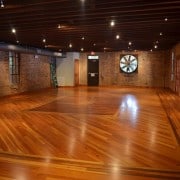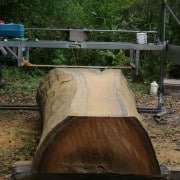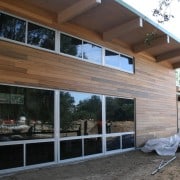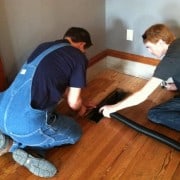Reclaimed Wood Flooring… 5 Things to Learn in 5 Minutes
The following tips have links if you want more detail. Or call and talk with our in-house technical expert, Andrew St. James.
1. Help in choosing a reclaimed wood floor…
Begin with a few choices:
· Do you want a unique floor witha story?
· Light, medium or dark? Consistent or color variation?
· Pin stripes, bold arches or subtle graining?
· Single or random widths?
· ‘Character’, pristine or in between?
· How about knots or do you want ‘clear’?
Maybe you just want to see a few of these characteristics in River Recovered Heart Pine… Legacy Heart Pine… River Recovered Heart Cypress… or Sustainably Harvested Woods.
Antique Heart Pine is the most frequently specified reclaimed wood.’Virgin growth’ heart pine, the ‘wood that built America’. is all heartwood, very hard and comes in many grades.
Some of the more commonlyavailable reclaimed woodsinclude: American Chestnut, Heart Cypress, Douglas Fir, Eastern White Pine and Oak.
2. Which finish should you use on reclaimed wood?
The finish you choose can dramatically change the look of your floor. While most reclaimed wood is sanded and finished smooth to the touch, you can have a distressed floor. Distressing simulates old, old floors or barn siding and is usually done on milling machines, though it can also be done onsite by craftsmen.
How you want to maintain your wood floordetermines if you want polyurethane that requires a professional to repair or if you want an oil finish that you can refresh when scratches occur. The oil finishes are very natural and low sheen; however, they can be made to have degrees of shine. They are especially appropriate for heavy traffic and come with easy maintenance products.
3. Would solid or engineered reclaimed wood work best for you?
Engineered wood is a growing market. Goodwin began engineered flooring to help conserve the rare River Recovered® wood. While solid wood floor may remain the ‘gold standard’ for those who can accommodate its greater demands, now you can have ‘USA made’ engineered flooringthat looks and lasts like solid and is easierto fit into the construction cycle.
4. Not all reclaimed wood is equal…
To consistently manufacture a well made reclaimed woodfloor that is properly kiln-dried, precisely milled, graded to established standards and backed by in-house technical expertise requires a considerable investment. Reclaimed wood can be a confusing niche. You may want to know some terminology when specifying antique heart pine. Building design professionals may want our free continuing education course on Architectural and Design Uses of Reclaimed Wood.
5. Installation tips to help your reclaimed wood perform well for a lifetime and beyond.
Once you have chosen your floor, what about installation? How to select a wood floor professional, even tips on existing subfloors are on our blogs. It is possible to get any stair parts or millwork in the same grade as your floor.
Engineered floor installation, when glued to concrete, needs to have an elastomeric type adhesive made for engineered wood. We generally suggest a vapor retarder over the slab. Even if the slab is dry now a seal coat ensures against future leaks or storms.
Just a few of the important tips to help ensure your solid wood floor installation:
1. The sub floor needs to be flat and level to within 3/16” over 10 feet for nail down or flat within 1/8” over 6 feet for glue down installation.
2. The moisture content of the wood floor and the sub-floor need to match the expected indoor temperature and relative humidity once the building has been occupied. Be sure to use a pin type moisture meter on dense reclaimed wood.
3. Enough ‘cleats’ for nail down jobs will help prevent the floor from moving too much. You should nail a 6” inch wide floor every 4”, an 8” inch wide floor every 3”, etc.
Call 800-336-3118 anytime we can help with your reclaimed wood questions.










